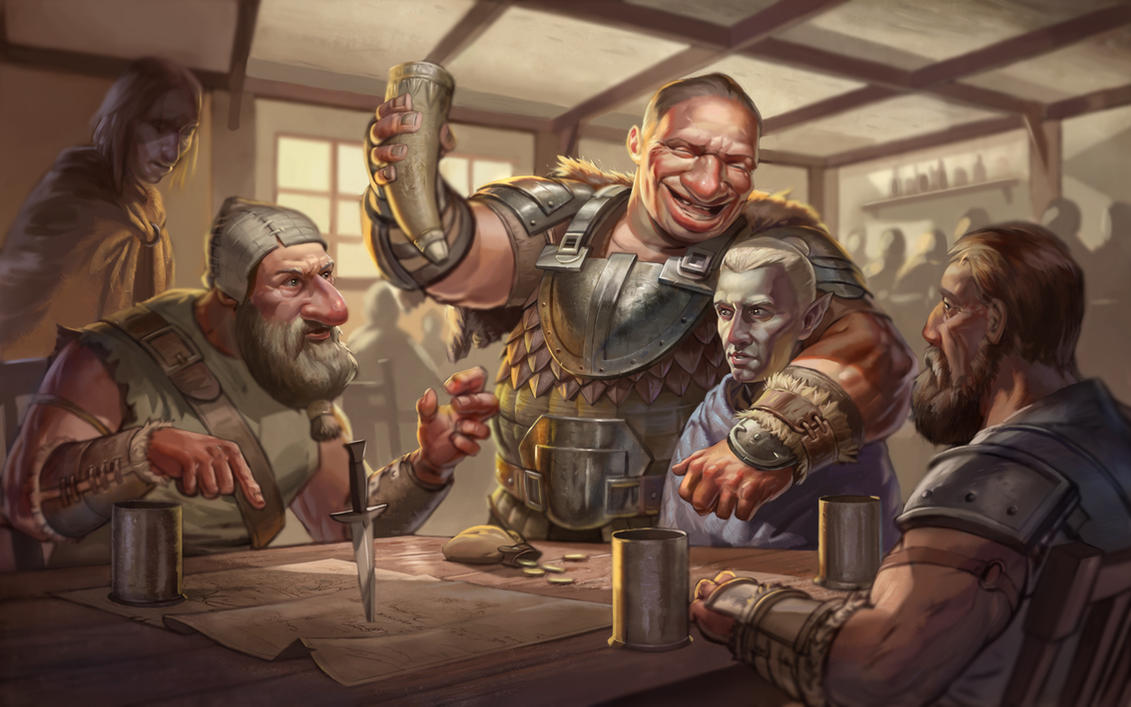The group of adventurers arrive to your recently crafted city, and go to the local tavern in search of rumors about the Lich
they are looking for. You didn't really expect your players to go there
as soon as they got to the city and now want to create some random (possibly
memorable) patrons that frequent the place without telling your players you
didn't have time to create this part of the city.
For this, I like to guide myself using the
following methods:
If you have enough time to prepare: DMG
The Dungeon Master’s Guide (DMG) from
Wizards of the Coast is often underappreciated when it does include lots of
great things to help the DM, one of this being the Creating Non Player
Characters chapter (DMG Chapter 4). There you will find a great amount of tips
on creating them, and tables you can roll in to make a random deep NPC.
You have little to no time to prepare: Donjon
As I previously stated in another post,
Donjon has got random tables for anything you might ever need. One of these is
the NPC table, in which by only selecting (or not) a race, gender, class and
culture you can get several of them, each with its own detailed description. By
knowing that, you can pretty easily give them a voice and way to interact with
the players and maybe even personality traits.
You have no time to
prepare: These random tables
There’s always that moment where your players want
to interact with some random person you mentioned only to make the place feel
more vivid or realistic. For when this happens, I always have a table of voices and
mannerisms prepared in my DM’s screen:
Slow and gravely
|
Fast and high noted
|
Normal
|
Normal and high noted
|
Normal and gravely
|
Slow and high noted
|
Slow
|
Fast
|
Fast and gavely
|
The first table was made by Technical Grimoire,
including lots of mannerisms and accents your NPCs can make. The second one is
a simple one I created to know how deep or high noted its voice is going to be.
By having both of this in your DM’s screen, when
you’ve got to create a character on the fly, point to some random place in both
of the tables. Whatever you pointed at will define your NPC. It may not be very
descriptive, but by having these two things decided you will surely be able to
imagine some person with this characteristics and detail it to your players.
Say for example you picked “Spits Often” and “Fast
and Gravely”. What first comes to my mind is a creature of low stature or a kid
as in my world they tend to speak in a faster manner. Let’s say because the PCs
found this character in the tavern it is a halfling. Having a gravely voice
must mean he is quite old, and grumpy, as he spits often. By having all of this
thought out I can easily give a general description.
Now, let’s say you want to create someone your
players’ party would like to fight. For this I suggest you use a table created
by a Youtuber I really recommend. She also gives a description on how to use
it, so I’ll just leave the blog she posted it in here for you to read:
Did you find these tips useful at all? Do you use any other random table I didn't mention? Do you use any other method, or would like to improve one of the ones I wrote about? Let me know in the comments!


Some good tips here! I think you alluded to this, but for those who don't know, donjon now has a feature to roll for locations and NPCs together. E.g. you can specify that you want to roll up a rowdy inn and you'll get back a named inn, several patrons and staff with descriptions, and a few mini events. It's pretty handy, but sometimes you roll up a place and you just have to chuckle at the rng gods and their warped sense of humor.
ReplyDeleteAlso, unrelated, but grats on the debut on Tribality. From what I've seen you've got some well thought out content to draw on and I'm sure you'll be a major contributor in no time!
Just saw this and thanks a lot for the support!!
Delete